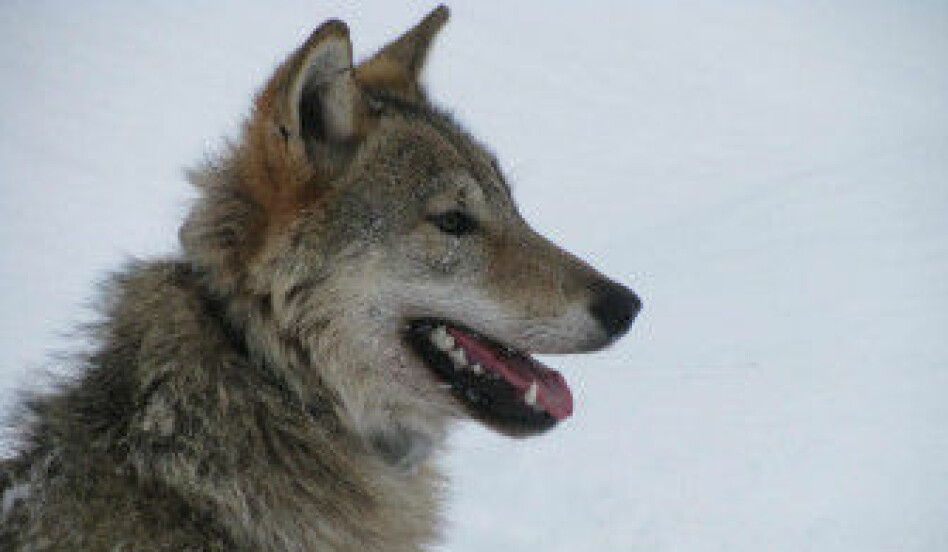
Return of Scandinavian wolves means fewer moose
The predator's return to the Norwegian/Swedish border has led to fewer moose in the areas where wolves have their territories. But hunters still kill far more moose than wolves do, researchers say.
The number of moose being shot in Norway and in neighbouring Sweden has dropped, with the largest reductions in recent years, and in areas where wolves have established territories.
Researchers from the Inland Norway University of Applied Sciences (INN) and from the Swedish University of Agricultural Sciences (SLU) say that the drop in moose numbers is at least partially due to the increase in wolves.
Hunters kill most moose
Hunters still kill a good deal more moose than wolves do, even within established wolf territories.
Hunters take two to three times more moose than wolves in these territories, according to one of three new studies on wolves and moose undertaken by researchers at INN and SLU.
But the same study shows that the number of moose taken by wolves can vary widely within a wolf's territory.
For one thing, wolves are not very good at figuring out how much food the pack needs, and will kill the same number of moose regardless of the pack size, according to 2015 research from Hedmark University College.
That means in the areas of wolf territories where wolves hunt freely and take many moose, there will be fewer moose left for hunters.
Nevertheless, the researchers have determined that wolves are responsible for killing an average of 7–8 per cent of the moose population in a wolf territory every year.
At the same time, hunters kill 15–19 per cent of the moose population in the same areas every year.

Hunting pressure far greater than predation pressure
The pressure on moose populations from hunters is thus greater than the wolf's predation pressure on the moose — even inside wolf territories.
At the same time, the researchers found that the variation can be quite large.
"Our research shows that there is a variation in hunting success within wolf territories, which can be partly explained by the wolf's uneven use of land," said Barbara Zimmermann, a researcher at INN.
The picture is complicated by the fact that in some wolf territories in Scandinavia, bears take even more moose than wolves.
Bears emerge from hibernation sometime in March, and are then quite hungry.
As a result, the combination of bears, wolves and hunters can kill up to 30 per cent of all moose in some areas each year.
Affects hunting strategies
The researchers also found that wolves have now influenced moose hunters' strategies.
In Norway and Sweden, hunters themselves have initiated measures to increase the number of moose.
One strategy is for hunters to shoot more calves, rather than adult animals. Another strategy is to shoot fewer moose cows, to increase productivity in the moose population.
Both can be effective.
Probably at least three-quarters of all moose taken by wolves are young calves. Even if hunters stay away from reproductive moose, the researchers calculate that the moose population can tolerate a 40 per cent reduction in numbers each year without the overall population being reduced.
———
Read the Norwegian version of this article on forskning.no
































